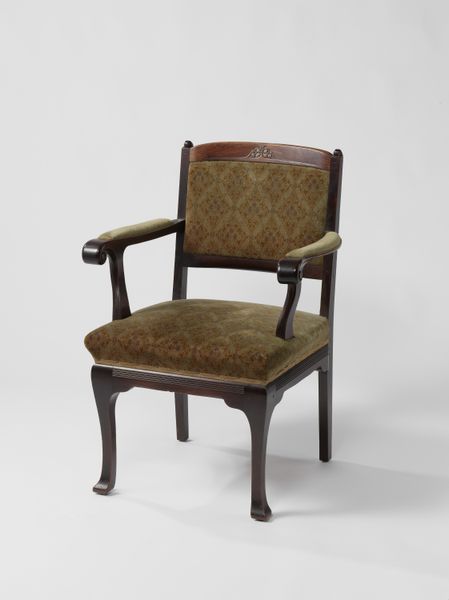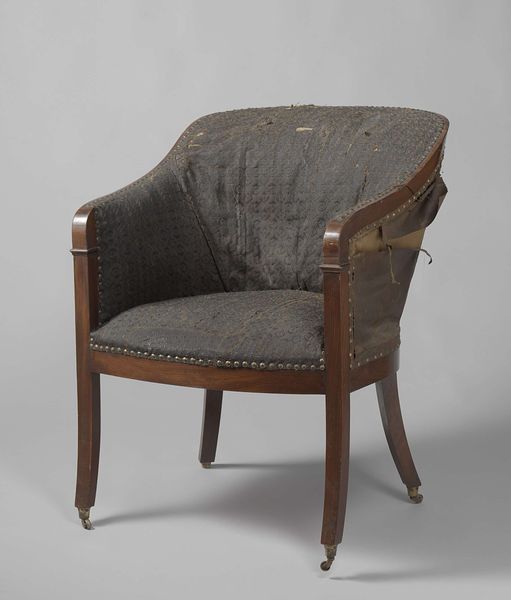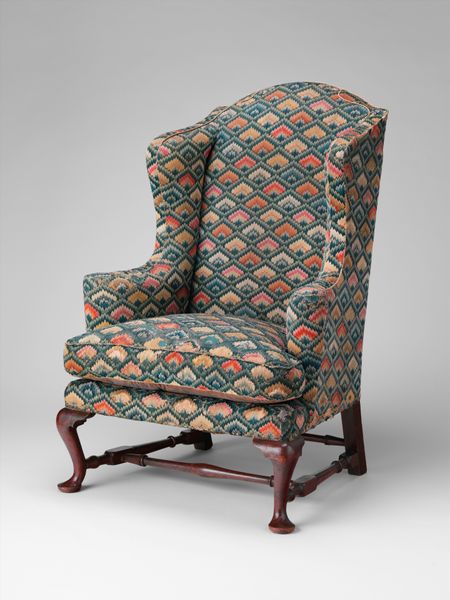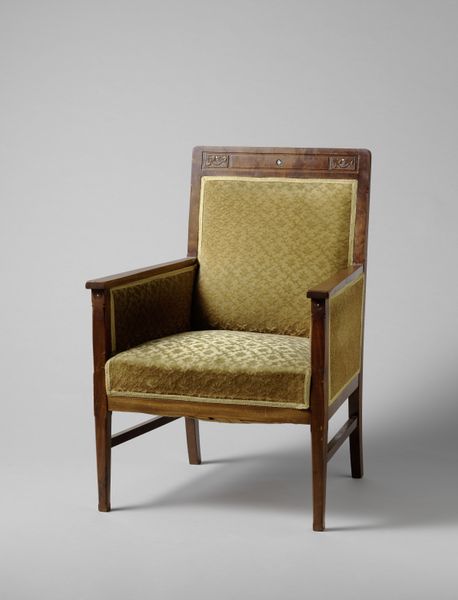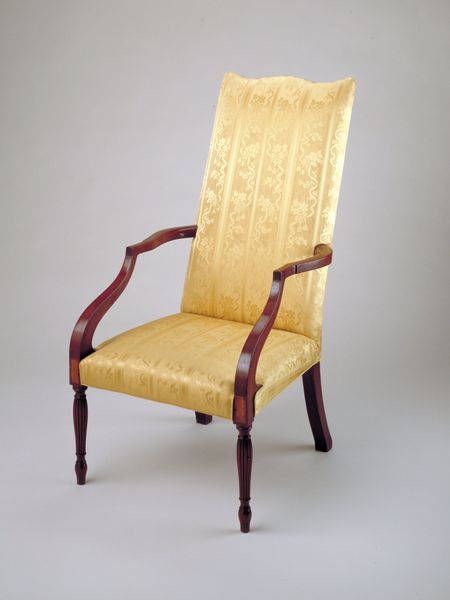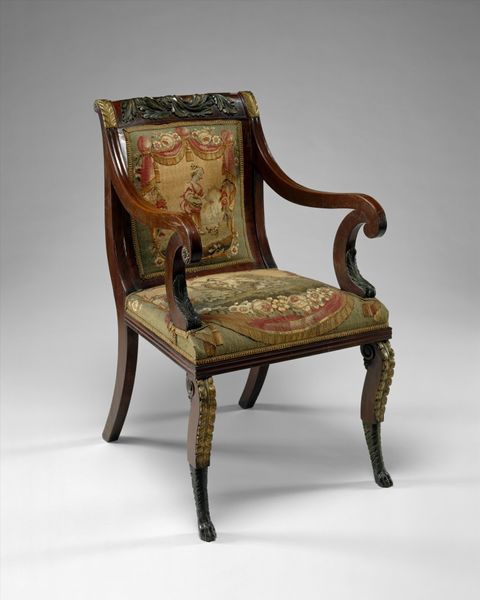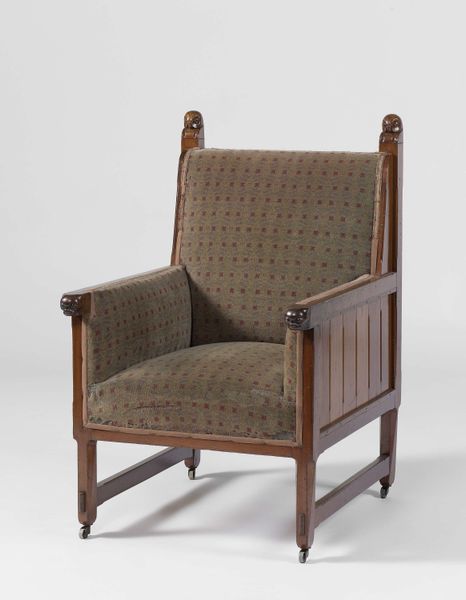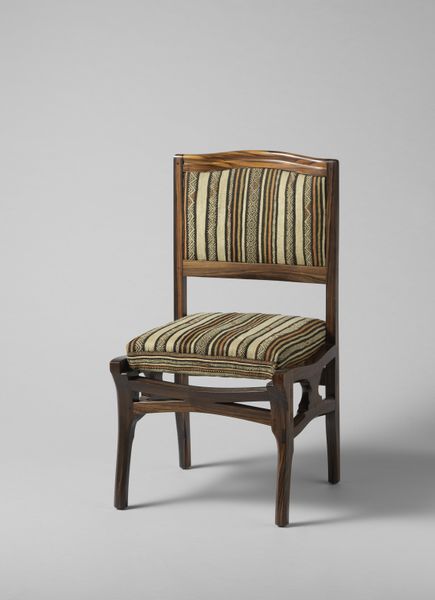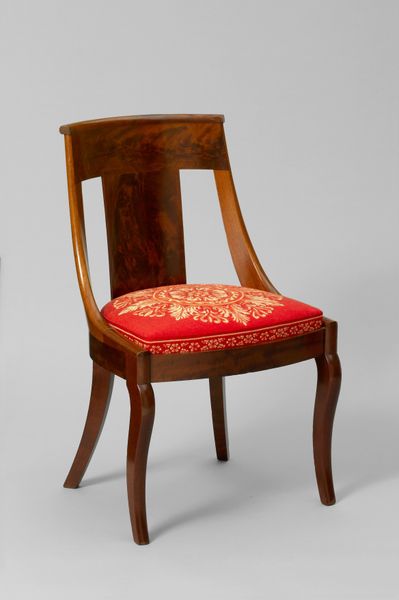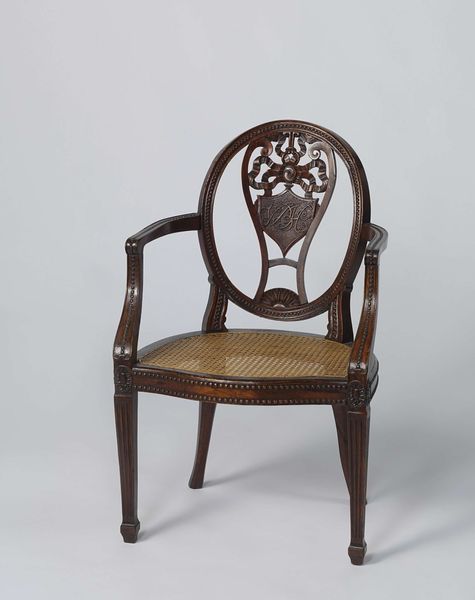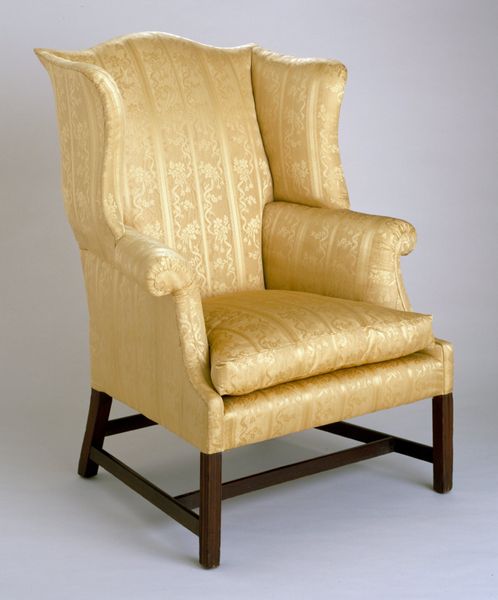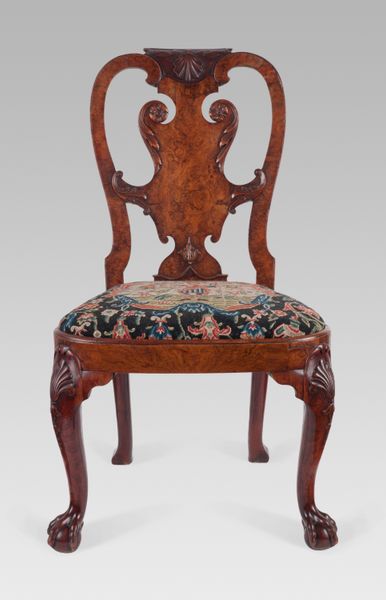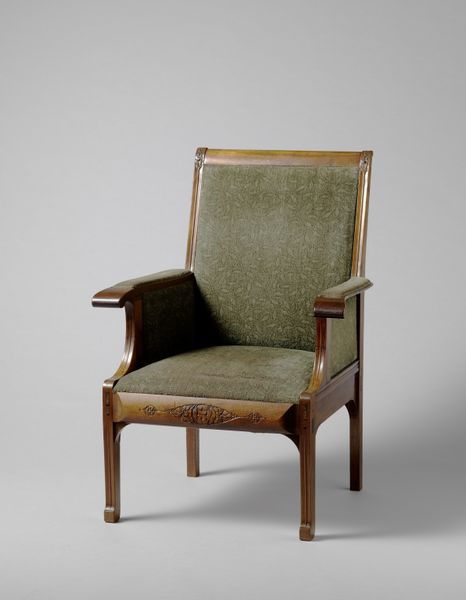
textile, wood
#
portrait
#
arts-&-crafts-movement
#
textile
#
figuration
#
wood
#
decorative-art
Dimensions: 78.7 × 59.7 × 49.5 cm (31 × 23 1/2 × 19 1/2 in.)
Copyright: Public Domain
Curator: Editor: This is Arthur Heygate Mackmurdo's armchair from around 1885, currently housed at the Art Institute of Chicago. It is made of wood and textile, but unlike traditional furniture, its fabrication really strikes me. The textile and wood appear intertwined...almost challenging conventional norms of what each element "should be" aesthetically. What's your take? Curator: Mackmurdo, a central figure in the Arts and Crafts movement, aimed to dissolve the distinction between fine and decorative arts. Look closely at the construction. What does the chair’s materiality suggest about labor and production during this period? How do the chosen materials of wood and textile influence its accessibility? Editor: So, the fact that it is furniture elevates something functional into the realm of art, but its reliance on both textile and carpentry connects it to many artisans involved in its making. How might its consumption have differed compared to a painting, or sculpture at the time? Curator: Exactly. This object implicates more than just the designer. The materials would be sourced, crafted and assembled by various hands. Considering it as a commodity within Victorian society, does the handmade quality of this chair challenge the rise of industrial manufacturing, or perhaps find a niche within it, signifying luxury and status through artisanal labor? Editor: So, the "handmade" aspect speaks to a desire for higher quality and individual craftsmanship during increasing industrialization, almost as a quiet rebellion. That certainly changes how I see this piece and its function! Thanks! Curator: Indeed. By viewing this "armchair" as an output from a collective and within an economic structure, we see that what appears "merely" decorative has considerable implications related to the culture of its time.
Comments
No comments
Be the first to comment and join the conversation on the ultimate creative platform.
